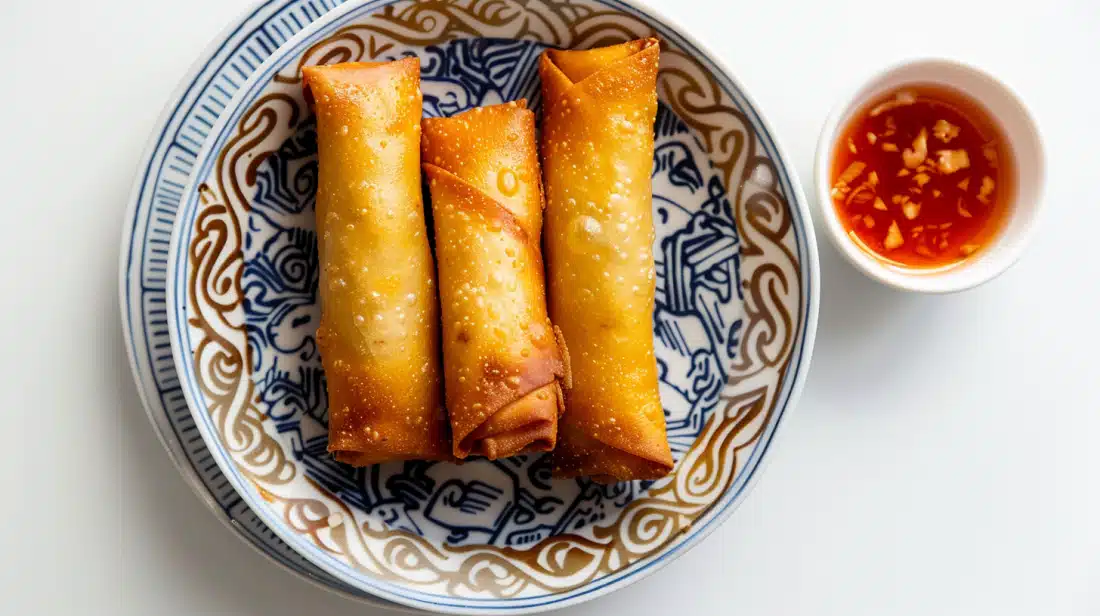Egg rolls are a beloved appetizer, but creating the perfect seal can be tricky.
The filling may leak out during frying without a proper seal, resulting in a disappointing mess.
Luckily, with the right techniques, you can master the art of sealing egg rolls and achieve restaurant-quality results every time.
In this article, we’ll provide expert tips and techniques for sealing egg rolls, from choosing the right wrapper to the perfect folding method.
Whether you’re a beginner or an experienced home cook, you’ll learn the secrets to creating egg rolls that are crispy, flavorful, and beautifully sealed.
So, grab your ingredients, and let’s start your journey to egg roll perfection!
Origin of Egg Rolls
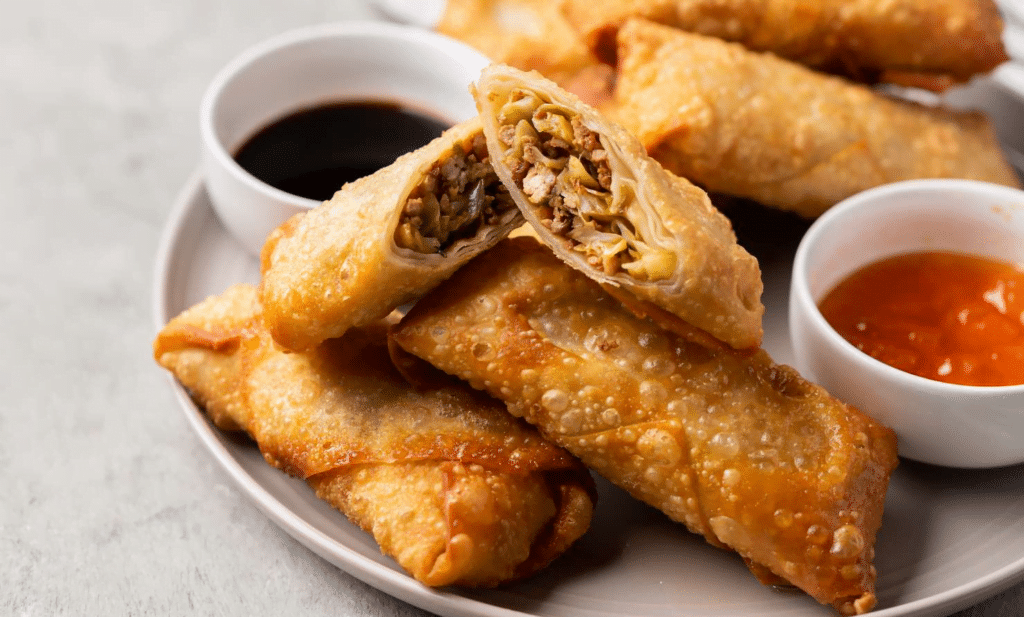
Egg rolls, while inspired by Chinese cuisine, actually originated in the Northeastern United States.
Chinese immigrants adapted their traditional spring roll recipes to suit American palates, creating a new dish that would become a staple in Chinese-American cuisine.
They developed a unique recipe that catered to local tastes and preferences by modifying the ingredients and preparation methods.
Evolution Over Time
As egg rolls gained popularity, they evolved and varied across different regions.
Cooks and restaurants put their spin on the classic recipe, introducing new fillings and flavors to appeal to a wider range of customers.
This evolution led to vegetarian options featuring fillings like tofu, mushrooms, and various fresh vegetables, making egg rolls more accessible to people with diverse dietary needs and preferences.
Modern Variations and Global Influence
Today, egg rolls can be found in various cuisines worldwide, showcasing this beloved appetizer’s global influence and versatility.
The possibilities are endless, from traditional pork and cabbage fillings to more innovative combinations like kimchi and cheese or even sweet dessert egg rolls filled with fruit and cream cheese.
These contemporary variations highlight egg rolls’ adaptability and enduring popularity as they continue to be reinvented and enjoyed by people from all walks of life.
Preparing to Seal Egg Rolls
1. Choosing the Right Wrappers
| Type of Wrapper | Benefits |
|---|---|
| Gluten-Free | Ideal for those with gluten sensitivities; ensures no gluten cross-contamination in meals. |
| Vegan | Suitable for those on a plant-based diet, no animal products are used to manufacture the wrappers. |
| Low-Carb | It is good for those reducing carbohydrate intake; it supports low-carb diet plans. |
2. Materials Needed for Sealing Egg Rolls
| Material/Tool | Description | Purpose |
|---|---|---|
| Egg Roll Wrappers | The outer shell of the egg roll. | Used to enclose the filling and form the body of the egg roll. |
| Bowl of Filling | Typically, it contains a mixture of pre-cooked and seasoned vegetables, meat, or other ingredients. | Provides the content and flavor inside the egg roll. |
| Egg Wash or Cornstarch Slurry | Egg wash: beaten egg with water. Cornstarch slurry: equal parts cornstarch and water. | Used to seal the edges of the egg roll wrappers to keep them closed. |
| Pastry Brush | A small brush is used in cooking. | Apply the egg wash or cornstarch slurry to the edges of the wrappers. |
| Clean Plate/Tray | A flat surface is needed to hold the sealed egg rolls before cooking. | Keeps the egg rolls organized and ready for cooking. |
Step-by-Step Guide to Sealing Egg Rolls
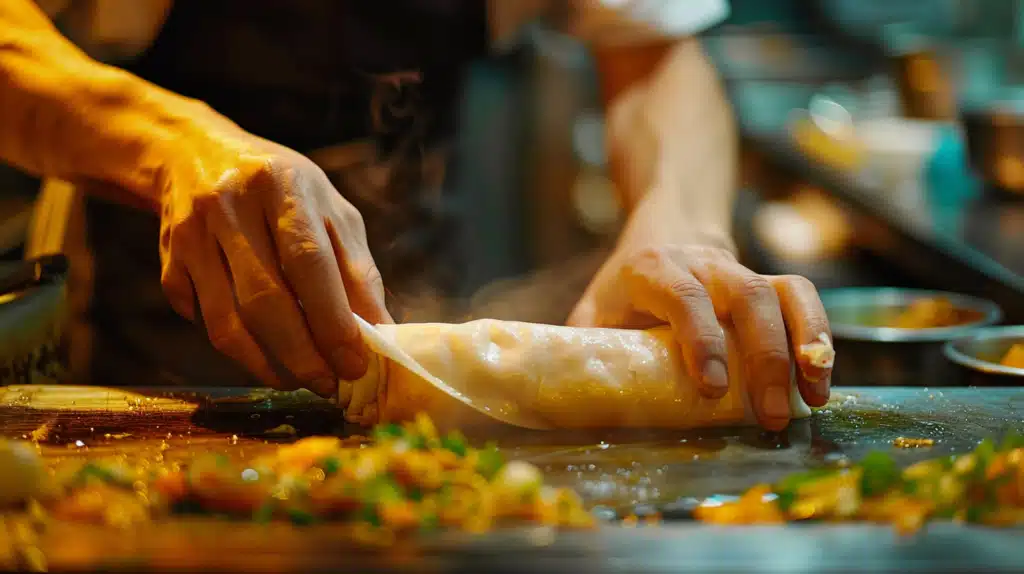
1. Positioning the Wrapper
Place the egg roll wrapper on a clean, flat surface in a diamond shape, with one corner pointing towards you.
This orientation makes it easier to fold and roll the wrapper securely around the filling. Ensure that the wrapper is smooth and free of any tears or creases.
2. Adding the Filling
Spoon about 2-3 tablespoons of your prepared filling onto the lower third of the wrapper, centered horizontally.
Be careful not to overfill, as this can make rolling difficult and increase the chances of the wrapper tearing.
Leave enough space around the filling to allow for easy folding and sealing.
3. Making the Initial Folds
Fold the bottom corner of the wrapper up and over the filling, tucking it under the filling slightly to create a snug pocket.
Next, fold the left and right corners of the wrapper inward, as if you were making an envelope, to encase the filling.
These initial folds should be tight enough to hold the filling securely but not so tight that they tear the wrapper.
4. Applying the Sealing Agent
You can use an egg wash or a cornstarch slurry when sealing your egg rolls.
Egg wash is the traditional choice and provides a golden, glossy finish, but a cornstarch slurry is an excellent alternative for those following a vegan diet.
Both sealing agents help to create a tight seal and prevent the filling from leaking out during cooking.
5. How to Apply Sealing Agents Effectively
Using a pastry brush, apply the egg wash or cornstarch slurry along the edges of the exposed top corner of the wrapper. Be sure to cover the entire edge, ensuring a secure seal.
Apply the sealing agent sparingly, as too much can make the wrapper soggy and difficult to work with.
Advanced Sealing Techniques
| Technique | Description | Tips for Implementation |
|---|---|---|
| Managing Tears and Repairs | Tears can occur during the sealing process. | Cut a small wrapper, moisten it with a sealing agent, apply over the tear, and press gently. Continue rolling carefully. |
| Enhancing the Seal | Creating a stronger seal can prevent opening during cooking. | Apply a double layer of sealing agent along the seam or mix a small amount of flour into the sealing agent for a stronger bond. |
| Uniform Wrapping | Consistency in size and shape ensures even cooking. | Portion the filling using a measuring spoon. Roll with consistent pressure to maintain a tight, cylindrical shape. |
Cooking Considerations
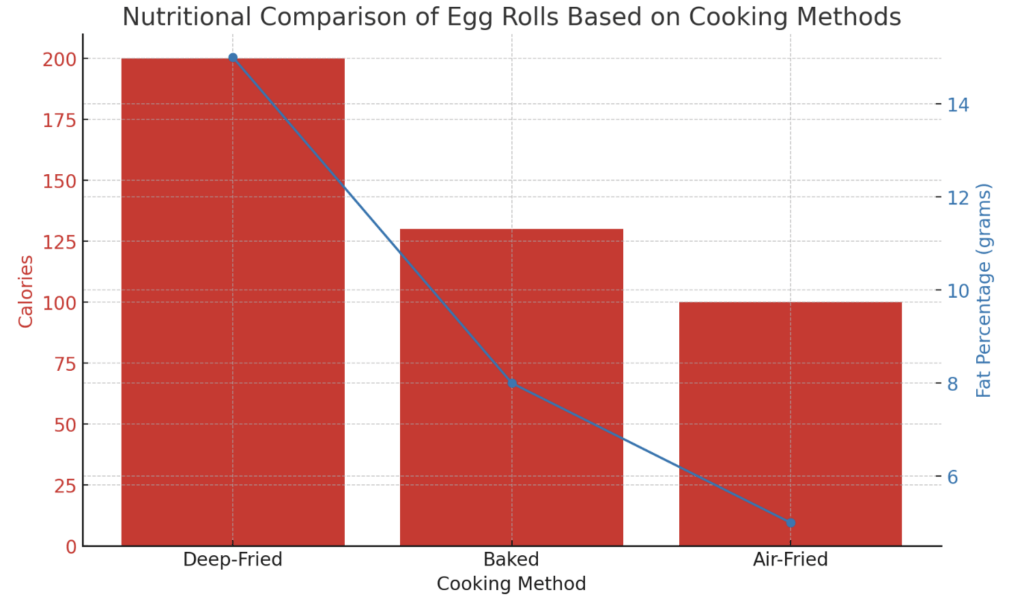
1. Deep-Frying
- Traditional method that results in a crispy, golden-brown exterior.
- It can be messy and adds extra fat.
- Recommended oil temperature: 350°F.
- Fry in small batches for 2-3 minutes or until golden brown.
2. Baking
- Healthier alternative that provides a crunchy texture.
- Preheat oven to 425°F.
- Lightly brush egg rolls with oil.
- Bake for 15-20 minutes, flipping halfway through.
3. Air-Frying
- It uses less oil than deep-frying, offering a healthier option with a crispy exterior.
- Preheat the air fryer to 400°F.
- Spray egg rolls with cooking oil.
- Cook for 8-10 minutes, flipping halfway through.
Serving and Storage
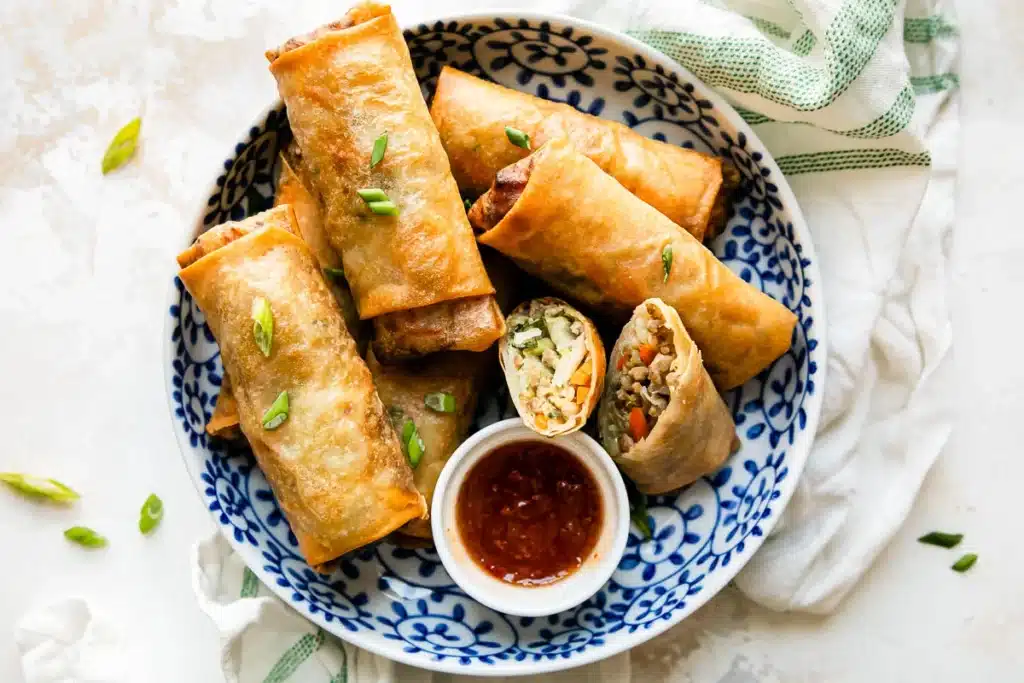
1. Best Practices for Serving Immediately
Egg rolls are best served hot and crispy. After cooking, they should be allowed to cool for a few minutes to prevent burning.
Serve with your favorite dipping sauces, such as sweet and sour, hoisin, or spicy mustard.
Cut the egg rolls diagonally and arrange them on a platter with the sauces for an attractive presentation.
2. Storing for Later Use
If you have leftover cooked egg rolls, allow them to cool completely before storing them in an airtight container in the refrigerator for up to 3 days.
To reheat, place them in a preheated oven at 350°F for 10-15 minutes or until crispy and heated.
Uncooked egg rolls can be stored in the freezer for up to 3 months.
Place them in a single layer on a baking sheet, freeze until solid, and then transfer them to a freezer-safe container or bag. Add 1-2 minutes to the cooking time to cook from frozen.
Cultural Significance and Popularity
Egg rolls have played a significant role in popularizing Chinese-American cuisine across the United States.
They have become a cultural icon, representing the fusion of Chinese and American culinary traditions.
Egg rolls are now a staple at many celebrations and gatherings, from family dinners to large-scale events, reflecting their integration into various cultural cuisines beyond their Chinese-American origins.
Their widespread appeal has contributed to the overall popularity and appreciation of Chinese-American food in the United States and beyond.
Beyond Basics: Creative Variations and Tips
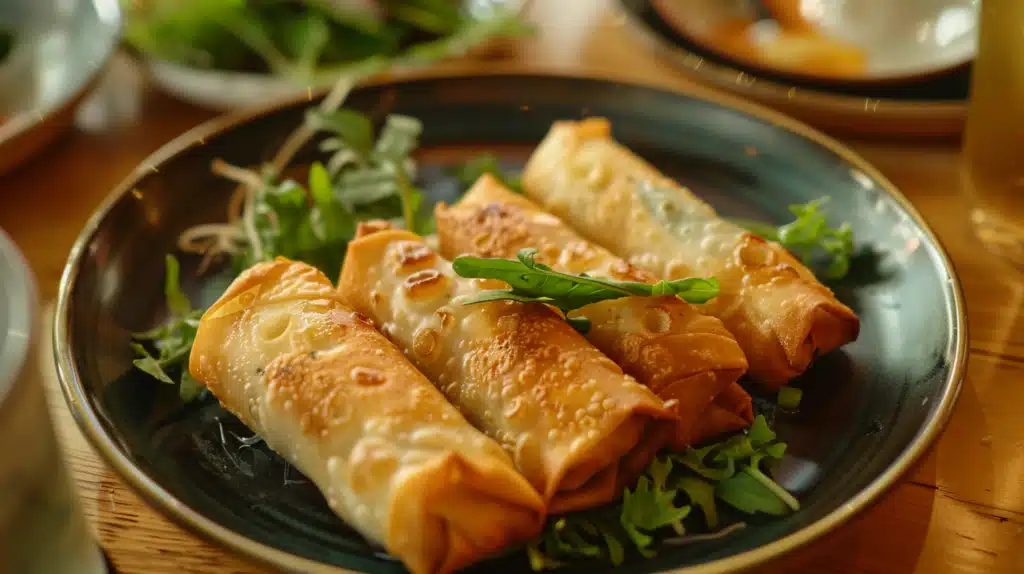
Classic egg roll fillings often include pork, shrimp, cabbage, and carrots. However, the possibilities for fillings are endless.
Try incorporating international flavors, such as Korean-inspired kimchi and beef or Mexican-style black beans and corn.
Fusion combinations, like Buffalo chicken with blue cheese or Cuban-style pork with pickles and mustard, can add an exciting twist to the traditional egg roll.
Consider using alternative ingredients to make egg rolls suitable for various dietary needs.
For a vegan version, replace meat with tofu, seitan, or vegetables like mushrooms, zucchini, and bell peppers.
Use rice paper wrappers instead of traditional wheat-based wrappers for a gluten-free option.
When modifying recipes, check the labels of all ingredients, including sauces and seasonings, to ensure they meet your dietary requirements.
Summing It Up
Mastering the art of sealing egg rolls is essential for creating the perfect appetizer.
You can create restaurant-quality egg rolls at home by understanding the importance of choosing the right wrapper, setting up your workstation, and following the step-by-step guide.
Remember to troubleshoot common issues, experiment with different cooking methods, and explore creative filling variations to take your egg rolls to the next level.
Whether a beginner or an experienced home cook, these expert tips and techniques will help you achieve egg roll perfection.
So, gather your ingredients, invite your friends and family, and start rolling!
With a little practice and patience, you’ll be able to impress your loved ones with your culinary skills and enjoy the satisfying crunch of a perfectly sealed egg roll.
Frequently Asked Questions
Why Won’t My Egg Rolls Stay Crispy?
Egg rolls can become soggy if not fried at the right temperature or if they sit out too long after frying. Drain and serve them immediately for best results.
How to Seal Egg Rolls without Eggs?
You can seal egg rolls without eggs by using a cornstarch slurry made with equal parts cornstarch and water. Apply it to the edges of the wrapper before rolling.
Why are My Homemade Egg Rolls Soggy?
Homemade egg rolls can become soggy if the filling is too wet, the oil temperature is too low during frying, or they are not drained properly after cooking.
Should You Double Fry Egg Rolls?
Double-frying egg rolls can help achieve a crispier texture. Fry them once at a lower temperature to cook the filling, then fry again at a higher temperature for a crispy exterior.

